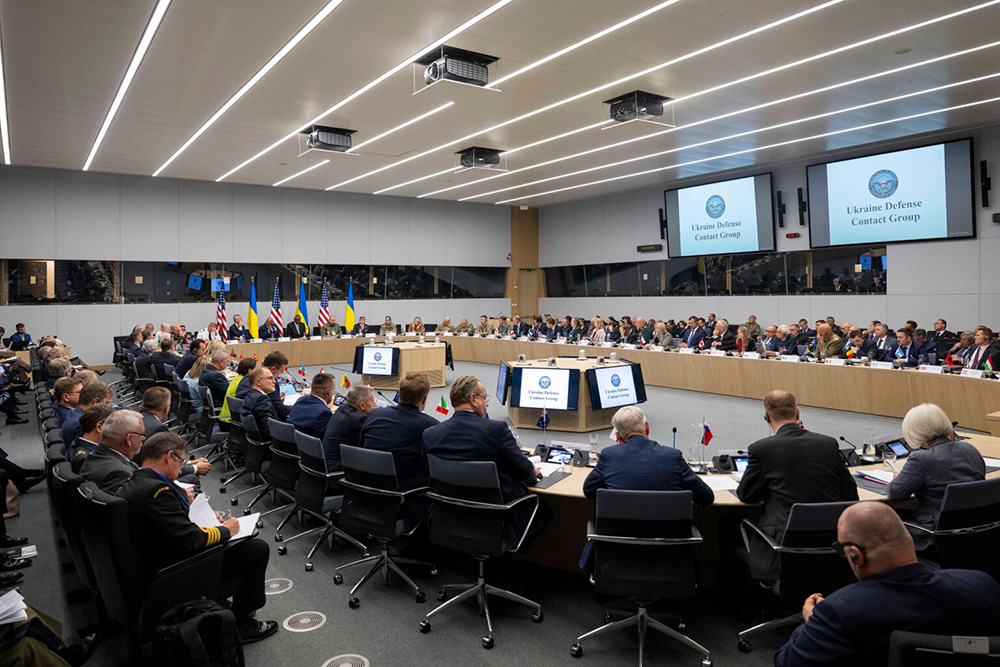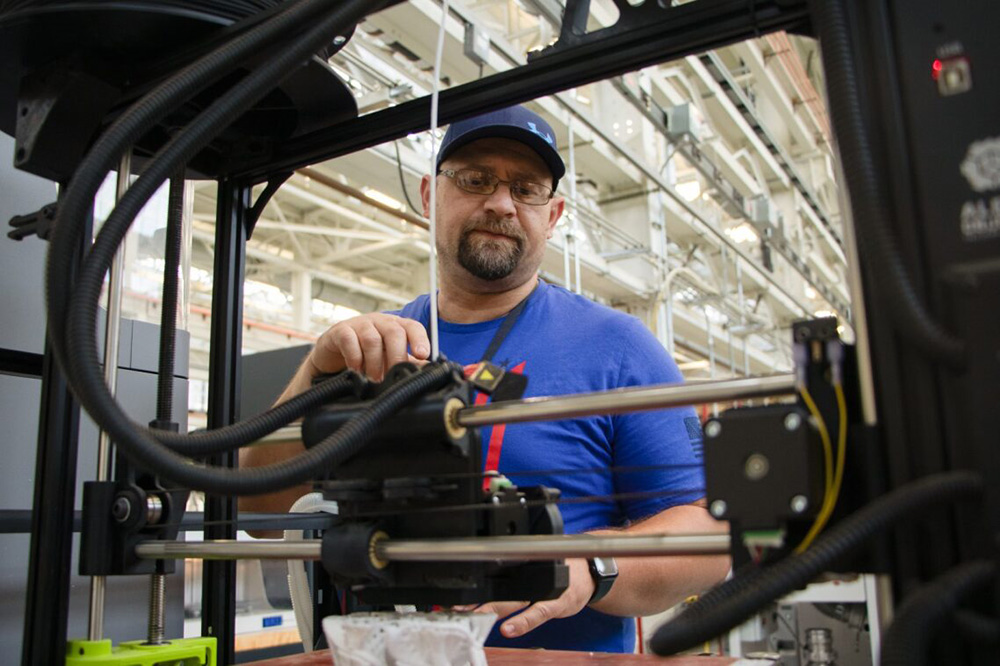Close collaboration with like-minded partners remains a top priority as Defense Department leaders drive efforts to reinforce supply chains and bolster industrial capacity, a senior Pentagon official said on Friday.
Vic S. Ramdass, principal deputy assistant secretary of defense for industrial base policy, detailed U.S. initiatives that further strengthen partnerships and invest in regional initiatives as part of a panel discussion on “production diplomacy” hosted by the Atlantic Council, a public policy think tank, in Washington.
Ramdass said the U.S. has long recognized the value of strong partnerships in promoting the shared values of peace and security across the globe.
“We have been at this for a long time,” he said. “But we must look at what has happened within the last few decades in terms of our investment in the industrial base and where we need to pivot [for] the future. Critical to that will be our long-term investments, but more importantly, how we continue to strengthen those relationships with our allies going forward.”
This imperative, he said, is captured in DOD’s first National Defense Industrial Strategy published earlier this year.
The 59-page blueprint lays out long-term priorities that will guide DOD actions and resource prioritization to create a modern, resilient defense industrial ecosystem designed to deter U.S. adversaries and meet the production demands posed by evolving threats.
It also underscores the critical role partnerships will play in charting DOD’s course.
“This strategy highlights the power of production-oriented diplomacy — leveraging networked production chains among allies [and], enabling us to build more resilient supply chains with like-minded partners while expanding production, innovation and overall industrial capacity,” Ramdass said.
He said such diplomacy supplements U.S. investments to build upon the defense industrial base both at home and abroad.
“Closer collaboration with allies and partners on defense industrial challenges is a top priority for our leadership,” he said.
That focus is evident in regions throughout the globe.
Ramdass noted the United States’ leadership in the nearly 50-member Ukraine Defense Contact Group, which has made significant strides in not only responding to Ukraine’s urgent battlefield needs but also in taking steps to bolster its long-term sustainment posture.

Secretary of Defense Lloyd J. Austin III hosts the 23rd iteration of the Ukraine Defense Contact Group alongside NATO Secretary General Jens Stoltenberg, Ukrainian Defense Minister Rustem Umerov, and Chairman of the Joint Chiefs of Staff Gen. CQ Brown, Jr., at NATO Headquarters in Brussels, June 13, 2024. © Navy Petty Officer 1st Class Alexander C. Kubitza, DOD
Lessons learned from the UDCG, which Secretary of Defense Lloyd J. Austin III stood up in the wake of Russia’s full-scale invasion of Ukraine, can also be applied to the Indo-Pacific, Ramdass said.
“The Indo-Pacific holds tremendous opportunities for shared prosperity and security across various sectors,” ranging from critical minerals to semiconductors, Ramdass said.
Earlier this month, Austin reinforced the U.S. and its partners’ commitment to strengthening defense industrial cooperation in the Indo-Pacific during his address at the International Institute for Strategic Studies Shangri-La Dialogue 2024 in Singapore.
“Together with our friends in the region, we’re breaking down national barriers and better integrating our defense industries,” Austin said.
“We’re also working together to fortify the shared capacity of the defense industrial bases of our allies and partners,” he said. “That’s why so many countries — including the United States — are endorsing a statement of principles today to strengthen the resilience of the region’s defense industrial bases.”
The joint statement outlines the signatories’ commitment to working collectively to expand industrial base capability, capacity and workforce. The partner nations also aim to increase supply chain resilience, promote defense innovation, and improve information sharing, among other steps.
The statement of principles also emphasizes the collective commitment to collaborate with industry, capital providers, academia and other nongovernment partners to bolster regional defense industrial resilience.

A machinist apprentice operates a 3D printer at the Advanced and Additive Manufacturing Center of Excellence in Rock Island, Ill., July 14, 2023. © Kendall Swank, DOD
Jedidiah P. Royal, principal deputy assistant secretary of defense for Indo-Pacific security affairs, noted yesterday during a forum hosted by the Center for Strategic and International Studies in Washington that 12 signatories to the joint statement have also agreed to establish a multinational forum to exchange lessons learned and best practices.
“This work is vital to enabling interoperability between our nations and promoting government-to-government and international industrial cooperation,” Ramdass said. “We’re seeking to complement our own investments with the significant and growing capacities and capabilities of our allies and partners in the Indo-Pacific.”





